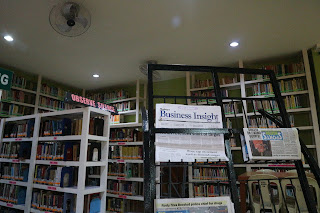First, thanks for join here. Because "what the meaning of blog if there is no reader". Hehehe...
Yupsss, I hope you enjoy my blog ...
Okayy... Let's start!
Yupsss, I hope you enjoy my blog ...
Okayy... Let's start!
- Teaching Methods
Students enter adolescence and can face new emotions, social situations, and intellectual challenges. They also enter their period of life where their performance has a direct impact, because universities officially oversee their value.
Statics shows that the ninth grade has the highest number of students who fail among all classes.
I see teachers using proactive tactics in learning. The teacher isolates the strengths and weaknesses among students in their curriculum, identifies high-impact teaching and support strategies to get students involved in their studies, and always actively makes the next step for students to reach the goal.
The teacher also identifies weaknesses and adjusts his attention to them. This will give students the confidence they need to have a smooth transition when they enter adolescence and find themselves in new situations, both socially and academically.
- Learning Materials and Innovation
The learning materials used were in accordance with the K to 12 curriculum. During the observation, I got math material learning for class 9 variations. A little different from Indonesia, we don't have variations material, but we learn about variations in other materials, such as algebra.
- Sources of Learning and Technology
At USJR a library can be found for all levels of education. Starting from the kinder garden to college. The library is one place that can be used as a place of learning. Every day students read and borrow books there, also study.
Besides libraries, computers are also one of the learning resources for students and also teachers. In every class I always find two air conditioners and one monitor as one of the supporting activities for teaching and learning in the classroom. Comfortable classes can certainly make teachers and students comfortable in the classroom too. There is also a speech lab room for English subjects
- Authentic Assessment

Knowledge Criticism
Based on models of critical literacy and critical pedagogy, knowledge criticism is a predisposition to the generation of alternative perspectives, critical arguments, and new solutions or knowledge (Luke, 2004). Knowledge criticism enables students to judge the value, credibility, and soundness of different sources of information or knowledge through comparison and critique rather than to accept and present all information or knowledge as given.
Knowledge Manipulation
Authentic assessments or tasks should provide students with more opportunities to make their own hypotheses and generalizations in order to solve problems, arrive at conclusions, or discover new meanings, rather than only to reproduce information expounded by the teacher or textbooks, or to reproduce fragments of knowledge and preordained procedures.
Task Clarity and Organization
The assessment task is framed logically and has instructions that are easy to understand so that students will not have misinterpretations and missing information. The written instructions, guidelines, worksheets, and other textual advanced organizers must be clear and well organized.
Connections to the Real World Beyond the Classroom
This criterion assesses the degree to which the assessment task and affiliated artifacts were connected to an activity, function, or task in a real-world situation.
Student Control
Teachers provide students with the opportunity to determine the parameters of a task such as topics or questions to answer, alternative procedures, tools and resources to use (textbook, or newspaper), length of writing or response, or performance or marking criteria.
Okayyy... Thank You.
Let's read the other things ^^
Let's read the other things ^^
.....................................








Komentar
Posting Komentar